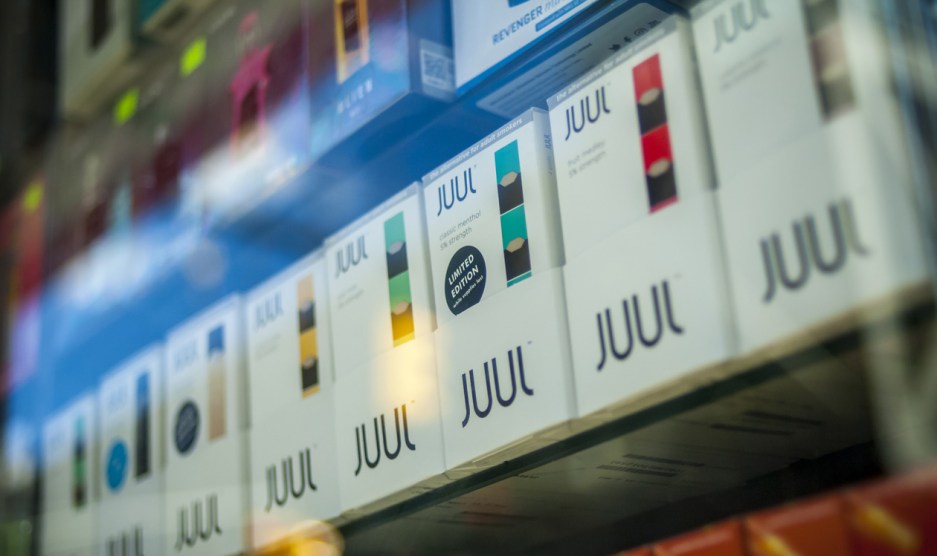
Richard B. Levine/Levine Roberts/Newscom via ZUMA
Cigarette smoking may be on the decline, but vaping is on the rise. The Wall Street Journal reports that the popularity of the Juul among high-school kids is skyrocketing:
After two decades of declining teen cigarette use, “Juuling” is exploding. The Juul liquid’s 5% nicotine concentration is significantly higher than that of most other commercially available e-cigarettes. Juul Labs Inc., maker of the device, says one liquid pod delivers nicotine comparable to that delivered by a pack of cigarettes, or 200 puffs—important for adult smokers trying to switch to an e-cigarette. It is also part of what attracts teens to the product, which some experts say is potentially as addictive as cigarettes and has schools and parents scrambling to get a grip on the problem.
But it’s not aimed at teens. Of course not:
One big concern, addiction researchers say, is that Juul lacks many characteristics that deter people from smoking in the first place, such as a harsh smell and burnt-tobacco taste. Juul flavors include “Creme Brulee,” “Fruit Medley” and “Mango,” in addition to “Classic Tobacco.” … A Juul device fits easily in a pocket and looks nondescript when plugged into a laptop’s USB drive to recharge or sitting on a desk. Teachers say students gather in bathrooms, library carrels and locker rooms to pass Juuls. The minimal vapor and barely there smell makes it harder to detect than some other e-cigarettes.
….Criticism that it was designed to appeal to kids is “absolutely false,” says Ashley Gould, Juul Labs chief administrative officer. “It’s non-cylindrical because when smokers move away from cigarettes they don’t want to be reminded of cigarettes.” Something that could be plugged directly into a USB port was also convenient, she says….Ms. Gould says the company is trying to find more ways of working with local law enforcement to prevent sales to under-age customers. It is also looking at technologies that could disable the device on school grounds, she says.
Easy come, easy go.















